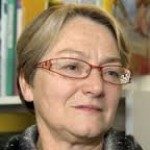Link to Pubmed [PMID] – 19159260
Link to DOI – 10.1021/ja804783x
J Am Chem Soc 2009 Feb; 131(5): 1736-44
The first step of heme acquisition by Gram-negative pathogenic bacteria through the so-called heme acquisition system, Has, requires delivery of the heme from the extracellular hemophore protein HasA to a specific outer membrane receptor, HasR. CRINEPT-TROSY NMR experiments in DPC micelles were here used to obtain information on the intermediate HasA-HasR complex in solution. A stable protein-protein adduct is detected both in the presence and in the absence of heme. Structural information on the complexed form of HasA is obtained from chemical shift mapping and statistical analysis of the spectral fingerprint of the protein NMR spectra obtained under different conditions. This approach shows the following: (i) only three different conformations are possible for HasA in solution: one for the isolated apoprotein, one for the isolated holoprotein, and one for the complexed protein, that is independent of the presence of the heme; (ii) the structure of the hemophore in the complex resembles the open conformation of the apoprotein; (iii) the surface contact area between HasA and HasR is independent of the presence of the heme, involving loop L1, loop L2, and the beta2-beta6 strands; (iv) upon complex formation the heme group is transferred from holoHasA to HasR.




